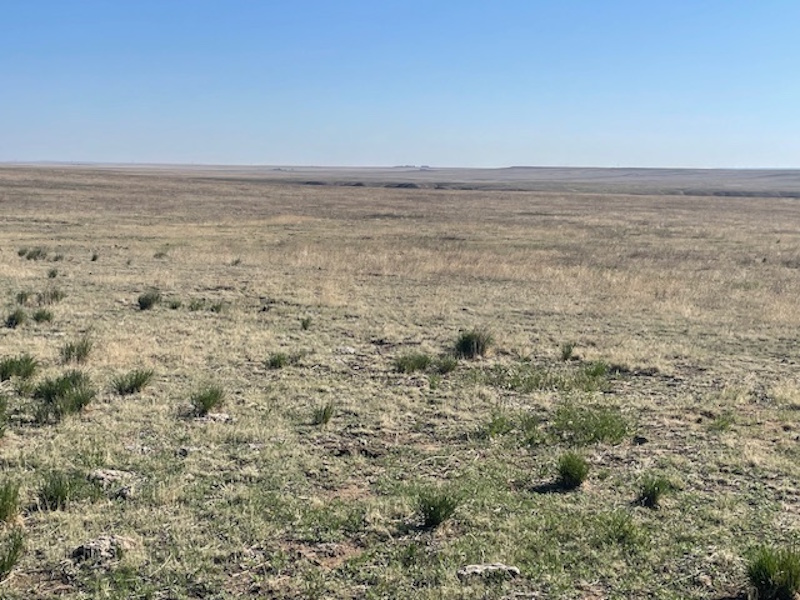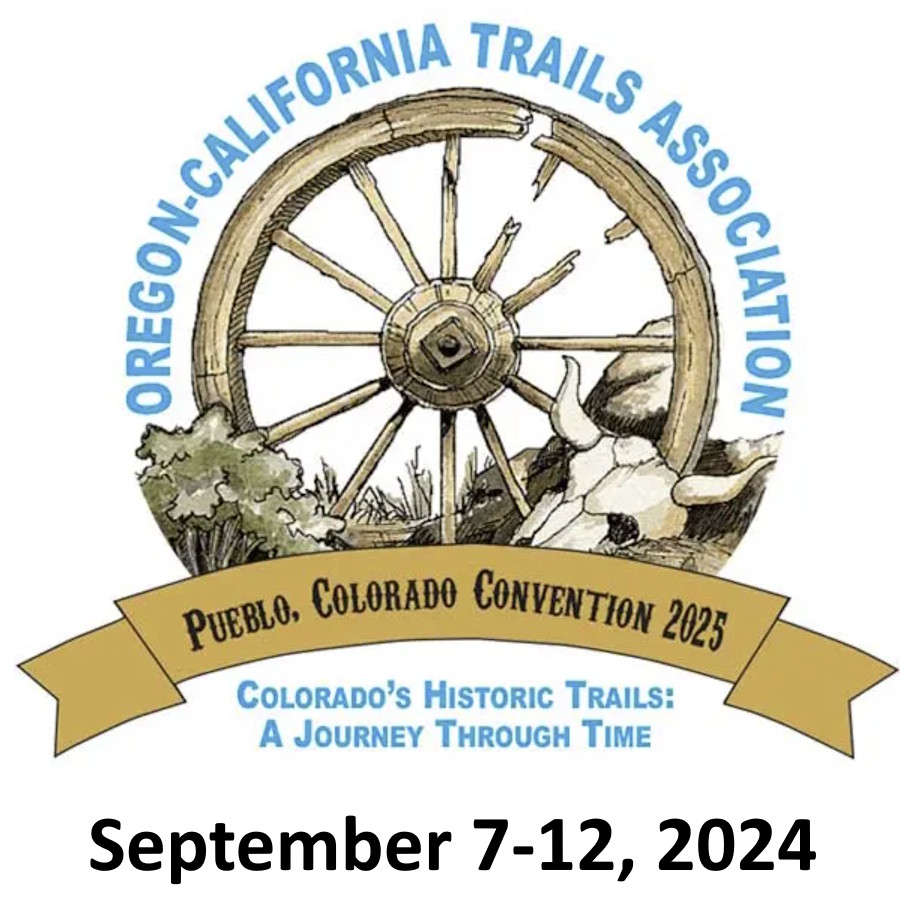Kevin – Saturday. As you read a variety of original journals, you inevitably come across an entry something like this; ‘Nothing of importance happened today.’
That’s a cop out. That’s just plain mentally lazy. If you’re paying attention, something will catch your eye to delight you. But, OTOH, I can honestly say that for us today, nothing much of importance happened. We did bike a fair amount on back roads and highways which were too narrow but there’s hardly any traffic, so we experimented some.
Through here, the original trail crosses the high plains where there is precious little water. It’s fairly flat. Cacti grow in abundance. The grass is short. The antelope (ok, pronghorns) have to range far and wide for sustenance. They are so very shy but curious. No, I didn’t get a picture. They’ve become much too common as we bike along. But that dark line just below the horizon? That’s Crow Creek – or at least the gully that Crow Cree flows down. Not many trees in this section. And, in the old days, wild prairie fires would burn off many of the young trees before they reached maturity. The creek would be easy to miss.

Crow Creek turns to the west towards Cheyenne, and I believe the detachments left the Crow at or near this distinct bend of the creek. The journals suggest a more eastward route than would be taken had they followed Crow to where Cheyenne is today. Col. Kearny’s 1845 South Pass Expedition came that way headed south, but we don’t think the detachments followed that route north in 1847.

Since I’ll be presenting on this route interpretation at the Pueblo OCTA Conference in September, I’ll not spill the beans by publishing a map with this post. Come to Pueblo. There will be great speakers and field trips which will pertain to the detachments and all the other groups that made history through this area.

